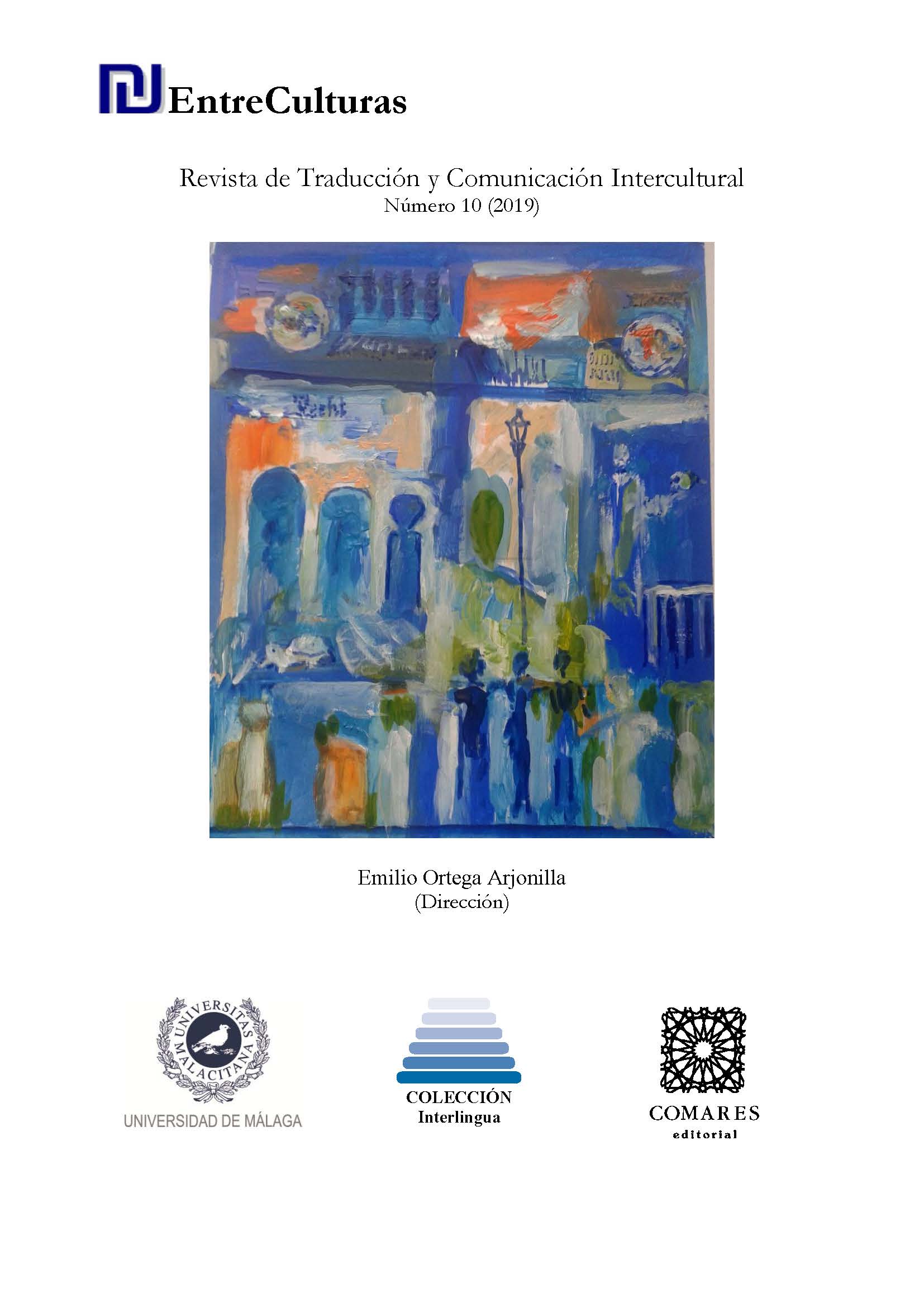Morphosemantic Peculiarities of the Terminological Units In The Field Of Homeopathy
DOI:
https://doi.org/10.24310/Entreculturasertci.vi10.12527Keywords:
terminology, terminology management, homeopathy, LSPAbstract
This research study is framed within the Communicative Theory of Terminology (Cabré, 1999) and after the detection and analysis of terminological units belonging to homeopathy, we will describe the particular features from a morphosemantic perspective. In order to do our systematic-descriptive work properly, we used the standard procedures covered by Corpus Linguistics (McEnery, 2006; Baker, 2009; Parodi, 2010), partly consisting of the processing of written corpus in the German language, in our case, specialized publications and communications among experts of homeopathy.
Downloads
Metrics
References
Arntz, R. y Picht, H. (1995). Introducción a la terminología. Madrid: Ediciones Pirámide.
Arntz, R., Picht, H. y Mayer, F. (2009). Einführung in die Terminologiearbeit. Hildesheim: Georg Olms Verlag.
Baker, P. (2009). Contemporary Corpus Linguistics. Londres: Continuum.
Cabré, M.T. (1993). La terminología. Teoría, metodología, aplicaciones. Barcelona: Antártida/Empúries.
Cabré, M. T. (1999). La terminología: representación y comunicación. Elementos para una teoría de base comunicativa y otros artículos. Barcelona: IULA.
Cabré, M.T. (2005). La terminología: representación y metodología (2ª Reimp.). Barcelona: Antártida Empúries.
Donalies, E. (2005). Die Wortbildung des Deutschen. Ein Überblick. Tubingia: Narr Francke Attempto Verlag.
Duden (2010). Universal Wörterbuch (CD-ROM Versión 5.1.0.0 ed.). Graz: Bibliographisches Institut GmbH.
Fleischer, WeI. Barz (2012). Wortbildung der deutschen Gegenwartssprache. Gotinga: De Gruyter.
Freixa, J. (2002). La variació terminològica. Analisi de la variació denominativa en textos de diferent grau d’especialització de l’àrea de medi ambient. Barcelona: Universitat de Barcelona.
Hahnemann, S. (1991). Las enfermedades crónicas, su naturaleza específica y su tratamiento homeopático (2ª Ed.). Mieres: Academia Homeopática de Asturias.
Hahnemann, S. (2001). Organon der Heilkunst. Göttingen: Burgdorf Verlag. Homeopathy For Everyone (2014).
Homeopathy For Everyone (2014). Online Homeopathy Dictionary. http://dictionary.hpathy.com [consulta: 5 de marzo de 2014].
Hoppe, G. et al. (1987). Deutsche Lehnwortbildung. Tubingia: Günter Narr Verlag. International Organization for Standardization (ISO) (1999). 12620. Computer Applications in Terminology – Data Categories. Suiza: International Organization for Standardization.
Kageura, K. (2002). The Dynamics of Terminology. A descriptive theory of term formation and terminological growth. Ámsterdam: John Benjamins Publishing Company.
Martínez de Sousa, J. (2012). Manual de estilo de la lengua española (MELE 5). Gijón: Ediciones Trea, S.L.
McEnery, T. et al. (2006). Corpus-based Language Studies. An advanced resource book. Londres: Routledge.
MediLexikon International Ltd. (2014). Medical Dictionaries, Drugs & Medical Searches. www.medilexikon.com [consulta: 3 de marzo de 2014].
Merriam-Webster Online (2014). www.Merriam-Webster.com [consulta: el 5 de marzo de 2014]. Novak, J. (1998). Learning, Creating, and Using Knowledge: Concept Maps as Facilitative Tools in Schools and Corporations. Mahwah, New Jersey: Lawrence Erlbaum Associates.
OMS (2014). Organización Mundial de la Salud: Preguntas más frecuentes. http://www.who.int/suggestions/faq/es/ [consulta: 5 de marzo de 2014].
Parodi, G. (2010). Lingüística de corpus y discursos especializados: puntos de mira. Valparaíso: Ediciones Universitarias de Valparaíso.
Pavel, S. y Nolet, D. (2002). Manual de Terminología. Québec, Canadá: Travaux publics et Services gouvermementaux Canada.
Roche (2003). Roche Lexikon: Medizin (5. ed.). Múnich: Urban & Fischer Verlag.
Stedman’s. (2006). Stedman’s Medical Dictionary (28 ed.). Baltimore: Williams & Wilkins.
Vargas Sánchez, G.M. (2011). Dialéctica del concepto de mmiasma a través de la historia (Tesis Doctoral). Facultad de Medicina de la Universidad de Bogotá, Colombia. Recuperado el 18 de diciembre de 2017 de http://www.bdigital.unal.edu.co/4152/1/05-598656.2011.pdf
Wayne, J. (2005). Mosby’s dictionary of complementary & alternative medicine. St. Louis: Elsevier Mosby.
Whole Health Now (2014). Professional Homeopathy Terms. http://www.wholehealthnow.com/homeopathy_pro/pro_glossary.html [consulta: 5 de marzo de 2014].
Downloads
Published
How to Cite
Issue
Section
License
All contents published in Entre culturas. Revista de traducción y comunicación intercultural are protected under the Creative Commons Attribution-NonCommercial-ShareAlike 4.0 International (CC BY-NC-SA 4.0) license. All about this license is available in the following link: <http://creativecommons.org/licenses/by-nc-sa/4.0>
Users can copy, use, redistribute, share and exhibit publicly as long as:
- The original source and authorship of the material are cited (Journal, Publisher and URL of the work).
- It is not used for comercial purposes.
- The existence of the license and its especifications are mentioned.
There are two sets of authors’ rights: moral and property rights. Moral rights are perpetual prerogatives, unrenounceable, not-transferable, unalienable, imprescriptible and inembargable. According to authors’ rights legislation, Entreculturas. Revista de traducción y comunicación intercultural recognizes and respects authors moral rights, as well as the ownership of property rights, which will be transferred to University of Malaga in open access. The property rights are referred to the benefits that are gained by the use or the dissemination of works. Entreculturas. Revista de traducción y comunicación intercultural is published in an open access form and it is exclusively licenced by any means for doing or authorising distribution, dissemination, reproduction, , adaptation, translation or arrangement of works.
Authors are responsable for obtaining the necessary permission to use copyrighted images.





7.png)
